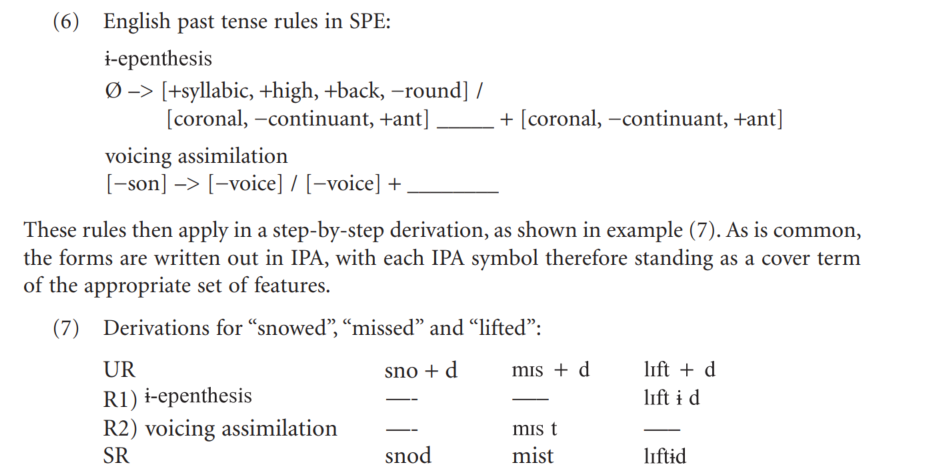Reading quiz qns
- Which of the following best characterizes Generative Grammar?
- In the underlying representation of lexical items, every feature is specified for every segment (phone). T/F?
- False
- Which of the following correctly represents the symbols for word boundary, morpheme boundary, and null?
- # / + / Ø
- On the SPE Generative Grammar view of language, how do different languages differ?
- different algorithm
- Any phonological rule can only change one feature value. T/F?
- F (see catalan)
Generative Grammar
Focus on deriving surface pronunciations from underlying forms.
What it means to know a language:
- know a set of UR
- know it’s rules
- correctly apply (aka derive) the surface representations (SR)
Derivations are applied sequentially in the process of language assembly in the grammar factory.
- Lexicon warehouse of morphemes
- Syntax assembly: Morphemes are put into words/sentences
- Phonological assembly: rules are applied individually in sequence
Underspecification: Some feature speicifications are redundant
A language is a process/algorithm that generates SRs from a set of URs concatenated in various ways.
SPE notation (Sound Pattern of English)
- Word boundary: #
- Morpheme boundary: +
- Syllable boundary: $
- Null: Ø
A -> B / C _ D
A -> B: Rule Formalism. (-> represents “become” or “are”)
/ : in the environment of
C _ D: the preceding/following environment
$V_0$: The subscript $0$ means zero or more
$(C)$: The brackets means either/or.
Derivations: UR to SR

Do the rules need to be ordered?
If the UR to output produces different outputs with different orders, then
- the rules interact
- Yes you have to impose order.

